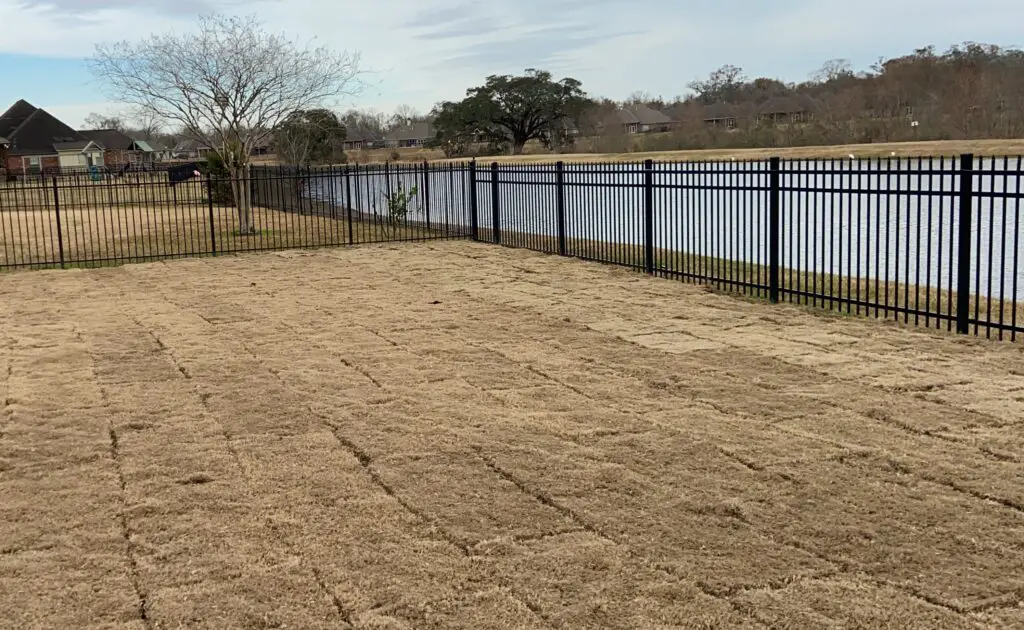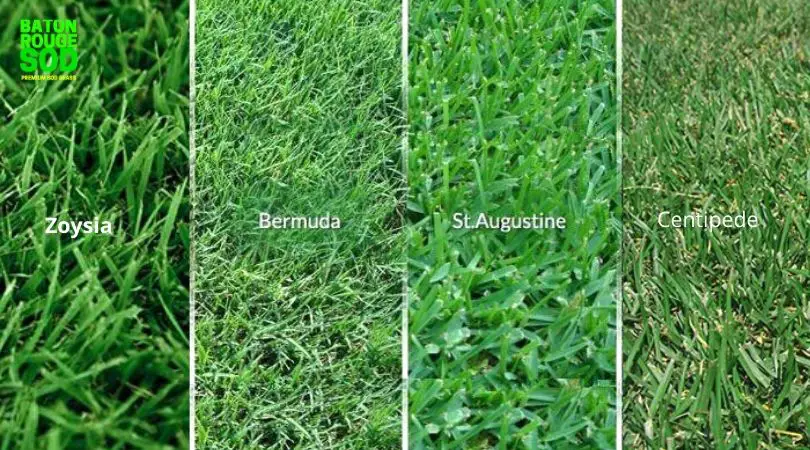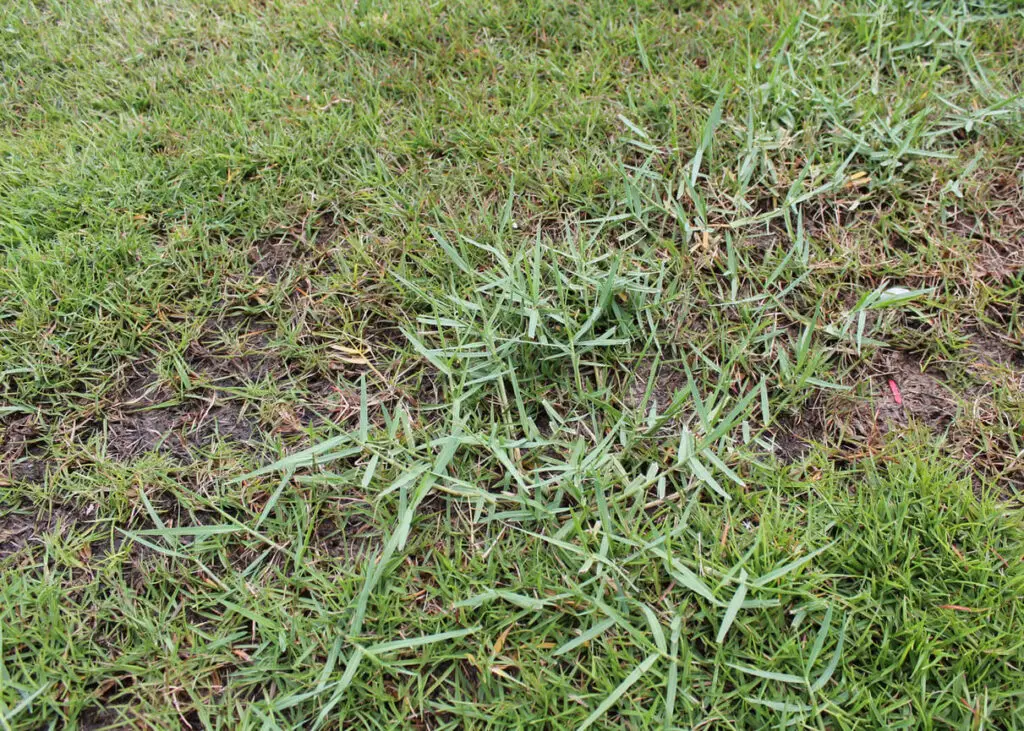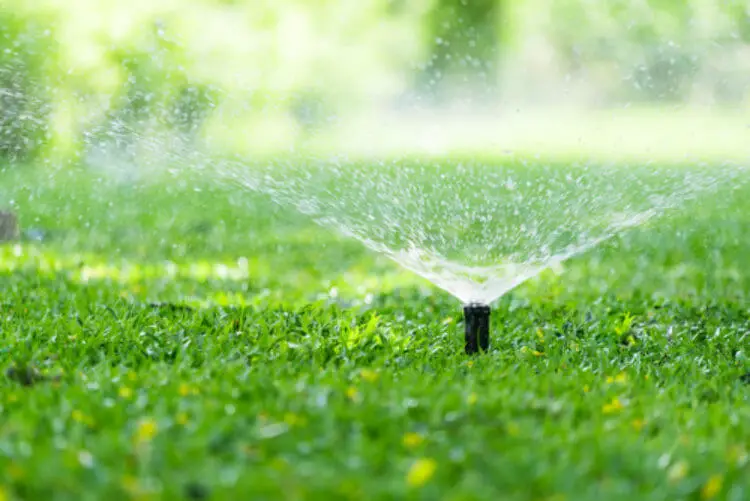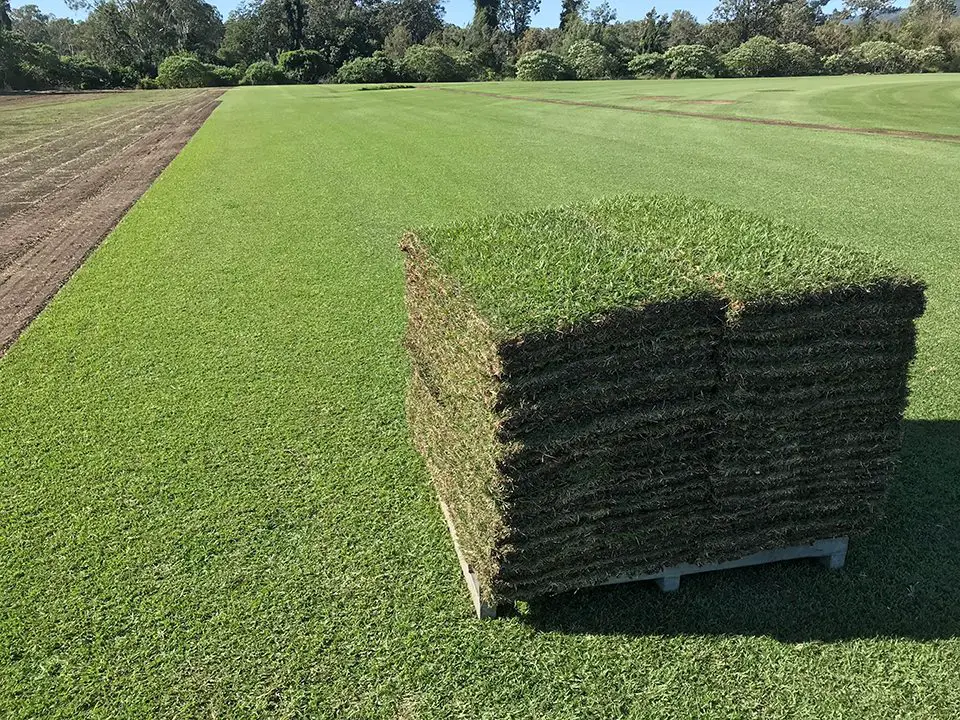Can You Lay Sod in the Winter?
Yes, you can lay sod in the winter.
The winter is a great time to get your turf project started.
However, it is not recommended to do so when temperatures drop far below freezing.
Sod can be laid at almost any other time during the year; as long as temperatures are warm enough and it receives adequate sunlight and water.
Winter is typically thought of as the off-season for gardening and landscaping.
However, with proper planning and preparation, sod installation in winter can be as successful as during the warmer months.
Installing sod in the winter gives you an advantage over installing new grass in other seasons.
The main reason to plant sod in the winter is to get it established before spring, which allows it to be well established when summer heat sets in.
If you lay your lawn during winter, it will be more likely to get a faster start in summer than sod installed in spring.
Why Lay Sod in Winter?
Sod that’s laid in the summer can be challenging to keep alive once it gets hot outside and rainfall becomes less frequent.
Roots may have a hard time with temperatures of about 90 degrees.
However, if you lay your lawn over the winter months, it will be more likely to survive until springtime, when you can water it regularly again.
In this way, laying turfgrass sod during winter gives you an advantage over installing new grass in other seasons.
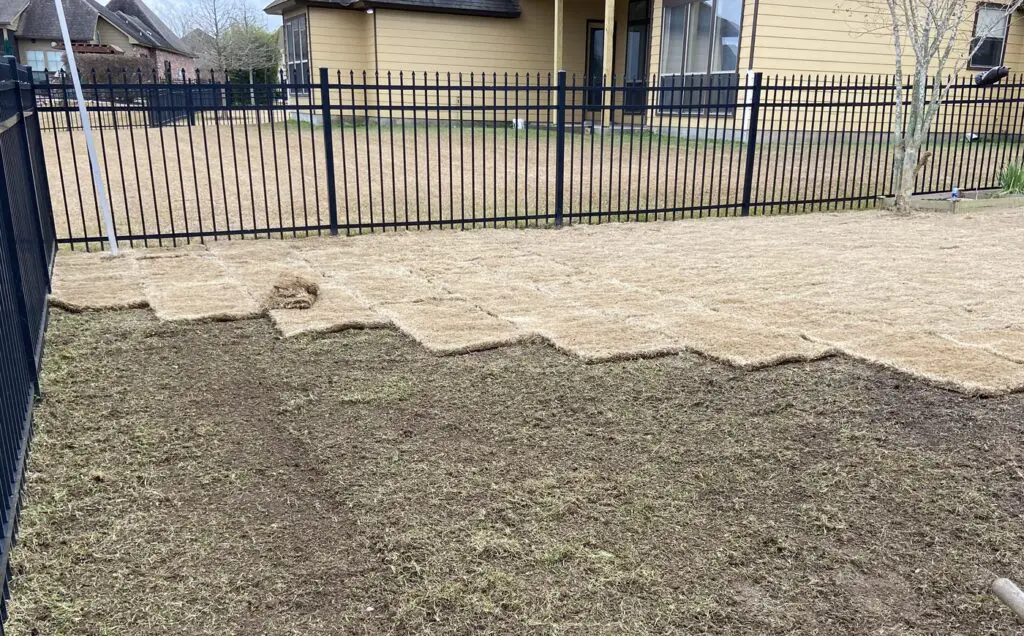
Why Sodding In The Winter Can Be Beneficial
Winter sod installation can be a great option for those looking to start their landscaping project in cold weather.
There are several benefits to installing sod in the winter that make it an ideal time for this type of work.
winter installation offers several benefits to laying sod in other seasons.
The benefits of winter sod installation
Installing sod in the winter has a number of benefits that make it a great choice for landscaping projects.
One of the key advantages is that the cool weather allows for improved root growth, which leads to a stronger, more resilient lawn.
Laying grass when it’s cold also offers a head start on establishment, so that by the time spring arrives, your grass will already be well established and ready to thrive.
Furthermore, the reduced watering requirements during the winter months can help save you time and resources.
Whether you’re looking to transform a barren landscape or add a touch of green to your property, winter sod installation offers many benefits that are sure to impress.
Laying sod in winter gives your lawn a Head Start on Establishment
Laying sod in winter may seem like an unusual choice, but it can provide a head start on establishing a new lawn.
Winter is actually one of the best seasons to lay sod for mild and warmer climates.
This is because roots established in winter allow the grass to start growing immediately in the spring when temperatures rise, rather than just getting started with spring installation.
Cooler temperatures and reduced evaporation from the soil allow the roots underground to develop while the grass leaf blades above ground are experiencing winter dormancy and grass is not actively growing. Dormant sod laid during cold weather will
Improved Root Growth
Sod roots have time to establish a sufficient root system to withstand harsh temps later in the year.
When you lay sod around these times, it creates a situation where the grass blades above ground are dormant and have very little competition for water and nutrients.
This allows your new lawn to absorb these resources more efficiently than it would if you planted it during warmer months when other plants also thrive.
How Long Does Sod Take To Root In Winter?
How long it takes for sod to root in the winter is influenced by various environmental factors such as temperature, soil conditions, and amount of water.
In cold circumstances, it may take several weeks to many months for the sod to form its roots.
In general, sod takes longer to root when it’s cold outside, because the soil temperature is lower and root development is slower.
Consistent moisture and regular watering can assist root development.
Winter sod installation offers Reduced competition from weeds.
Winter sod projects offer a unique advantage in the form of reduced competition from weeds.
Winter can be beneficial because there are typically fewer weeds actively growing and competing with the new grass.
Cold weather and lack of moisture kill weeds that often compete with new lawn; which gives your grass time to get established before the weeds start growing again in spring.

A benefit of winter sod installation is Reduced Watering Requirements.
One of the main benefits of winter sod installation is reduced watering requirements.
During the winter months, most regions experience colder temperatures and less precipitation than other times.
This means you won’t need to water your newly installed winter sod as often or for as long as you would in warmer months.
The combination of colder and cooler soil temperatures from snow cover will also help reduce the risk of diseases that can damage newly laid sod.
Additionally, with minimal moisture needed, it is easier to maintain consistent soil moisture levels, promoting healthy root growth.
So if you live in an area that experiences cold winters, then laying sod during this time could be a wise decision for those looking to save on their irrigation costs while still having a beautiful lawn come springtime.
Better Access to Installers
Another perk of laying sod in the winter is having better access to installers.
This makes it easier to find an installer who’s available–and willing to work on your project at your preferred time.
The competition for their services can be fierce during the warmer months, but during this time of year, fewer people want their lawns replaced with fresh grass.
Laying sod in the winter can save you money.
Sod is cheaper in the slower season, so contractors may be willing to give you a discount on the price of your project if they’re not too busy with other jobs.
If you have a smaller yard, it’s easier for one person or two people to lay sod during this time of year than during summer when it’s hot out, and more bugs are flying around!
Disadvantages of Laying sod in the winter
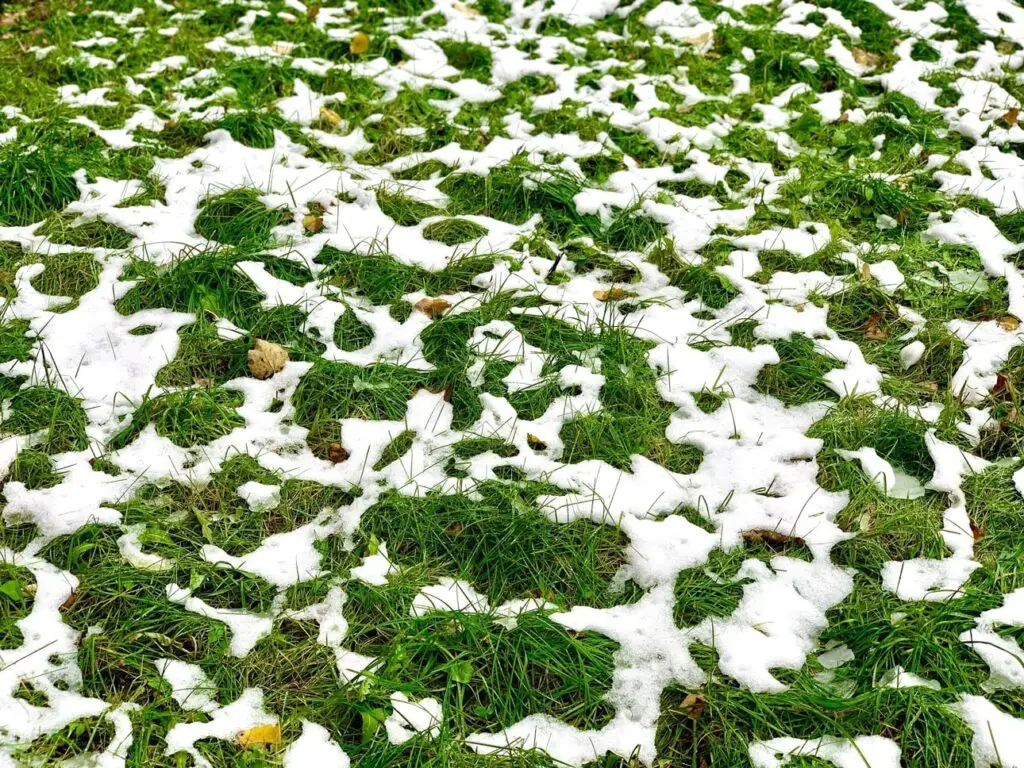
Adverse Weather Conditions
The first thing to consider is the weather.
Cold weather can make it challenging to work with new sod; if you are considering this option, it is a good idea to have a backup plan.
Grass can become brittle and die if the temperature drops too far below freezing.
If the weather is bad, it may be best to wait until spring or summer when conditions are more favorable.
Increased Risk of Freeze Damage
Cold temperatures can cause severe damage to newly laid sod, leading to a decrease in its quality and life expectancy.
When considering laying sod in winter, understand that there is an increased risk of freeze damage due to lower temperatures.
Sod is extremely sensitive and cannot survive under harsh conditions like heavy snowfall or below-freezing temperatures for extended periods.
Therefore, it is essential to assess local weather forecasts before deciding to lay sod during winter.
Limited Availability of sod during winter
While you may be eager to start your lawn project in the winter, sod is not always available in this season.
The availability of sod varies by region and variety.
One of the main problems with winter installation is limited availability.
Depending on where you live, many suppliers may not carry sod during this season due to cold weather and ground freezing.
This means that even if one wanted to purchase sod for their lawn, they may find it difficult or impossible to obtain in their area.
The best time to buy is during spring or summer when there are more varieties available.
Depends on the type of sod and location. Certain types of turf grass do well
Will Sod Die in Winter?
You might think that sod is dead in winter, but it’s not.
Turfgrass sod is dormant when temps drop and days get short.
The grass blades are still there and will grow again in spring if they’re not exposed to extreme cold for too long.
If you’re worried about your sod freezing and dying, don’t be!
Your lawn will likely survive the winter just fine.
Newly laid dormant sod may appear brown or dead.
It’s not. It’s just sleeping until temperatures warm and plants green up in the spring.
The ideal temperature for laying sod in winter
The temperature range during the installation of your sod is essential for success.
The ideal temperature for laying sod in winter is between 40-45 degrees Fahrenheit, but it can be done at lower temperatures as long as you have some help from Mother Nature after.
What Temperature is Too Cold for Sod?
You can install sod when it’s cold, but you need to be sure that the ground won’t freeze.
If the soil temperature drops below 32 degrees F, your new lawn may be damaged by frost.
If it drops below 20 degrees F, your new lawn will die altogether.
What types of grass is best in cold weather?
Because each species of grass has its own set of capabilities, you should take time to analyze your climate, environment, light, and water availability for individual demands before making a selection.
Cool-season grasses, such as Kentucky bluegrass, fine fescues, perennial ryegrass, tall fescue, and bentgrass, thrive and produce the greatest results in cooler climes.
These turfgrasses have been carefully propagated and developed to grow in colder temperatures.
They withstand harsh winter conditions, which makes them excellent for areas with cold winters and mild to warm summers.
Some Of The More Cold Tolerant Turf Grass Types
Cold Tolerant Cool-Season Turf Grasses
- Kentucky bluegrass
- Fine fescue (such as creeping red fescue, chewings fescue, and sheep fescue)
- Perennial ryegrass
- Tall fescue
- Bentgrass
Kentucky bluegrass:
- Midnight Kentucky bluegrass
- Kenblue Kentucky bluegrass
- Park Kentucky bluegrass
- Merion Kentucky bluegrass
- Monterrey Kentucky bluegrass
Fine fescue:
- Creeper red fescue
- Chewings fescue
- Sheep fescue
- Hard fescue
- Slender creeping red fescue
Perennial ryegrass:
- Pennfine perennial ryegrass
- Everest perennial ryegrass
- Pinnacle perennial ryegrass
- Regal perennial ryegrass
- DuraTuf perennial ryegrass
Tall fescue:
- Rebel tall fescue
- Brawn tall fescue
- Apache tall fescue
- Mustang tall fescue
- Thunder tall fescue
Bentgrass:
- Penncross bentgrass
- SR1020 bentgrass
- L-93 bentgrass
- Seaside II bentgrass
- Patriot bentgrass
Here are some additional cold-tolerant varieties of Zoysia grass, Bermuda grass, St. Augustine grass, and Centipede grass:
Cold Tolerant Warm-Season Turf Grasses
Zoysia grass:
Here is a list of the more cold-tolerant varieties of Zoysia grass:
- Empire Zoysia
- Meyer Zoysia
- Geo Zoysia
- Zenith Zoysia
- El Toro Zoysia
- Emerald Zoysia
- Majestic Zoysia
- Cavalier Zoysia
- Palisades Zoysia
- Zorro Zoysia
Bermuda grass:
here is a list of the more cold-tolerant varieties of Bermuda grass:
- Tifway 419 Bermuda grass
- Princess 77 Bermuda grass
- Patriot Bermuda grass
- Blackjack Bermuda grass
- Riviera Bermuda grass
- Midlawn Bermuda grass
- Yukon Bermuda grass
- TifGrand Bermuda grass
- TexTurf 10 Bermuda grass
- Yukon II Bermuda grass
- TifEagle Bermuda grass
- Princess 77 Bermuda grass is a newer variety that is known for its cold tolerance and can handle temperatures down to 10°F.
- Patriot Bermuda grass is another variety that is relatively cold-tolerant and can handle temperatures down to 15°F.
- Tifway 419, can handle colder temperatures and are better suited for transition climates.
St. Augustine grass:
here is a list of the more cold-tolerant varieties of St Augustine grass.
- DelMar St. Augustine grass
- Seville St. Augustine grass
- Bimini St. Augustine grass
- Captiva St. Augustine grass
- Flordawn St. Augustine grass
- Floratam St. Augustine grass
- Raleigh St. Augustine grass
- Palmetto St. Augustine grass
- Savannah St. Augustine grass
- Triumph St. Augustine grass
Centipede grass:
- TifBlair Centipede grass
- TifSport Centipede grass
- Thailand Centipede grass
- Premier Centipede grass
- MiniVerde Centipede grass
- MulchMaster Centipede grass
- The Mean Green Centipede grass
- Super Centipede grass
- US-1 Centipede grass
- Golden Crown Centipede grass
- Centennial Centipede grass is a variety that is known for its cold tolerance and can handle temperatures down to 10°F.
- Raleigh Centipede grass is another variety that is relatively cold-tolerant and can handle temperatures down to 15°F.
Can sod be installed on frozen ground?
I would say no, but we have heard people say they have done this successfully for years.
You can lay sod on frozen ground, but it is not recommended.
However, if you have a project with a deadline, you may have yet to have another option.
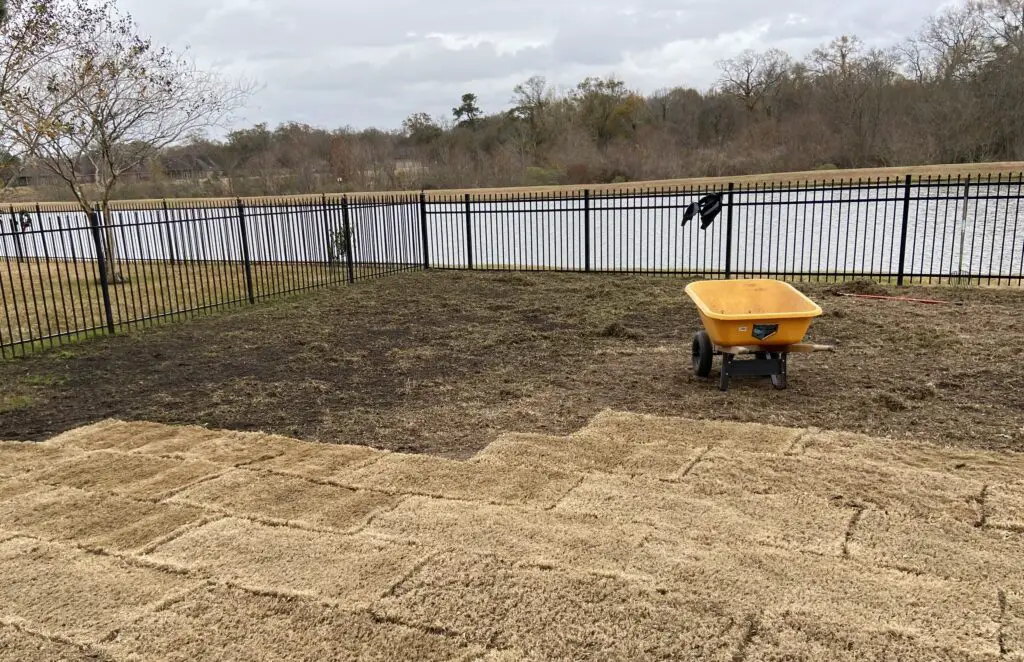
How to install Sod in the winter
If you have decided to take on an installation project in winter, you should take precautions when planning.
Check the weather forecast for the week of your project.
You should postpone or reschedule if you see high chances of rain, sleet, or snow.
Once you decide your project schedule, you should ensure all dirt work and area preparation is completed before your grass arrive.
Use a sod cutter or tiller to remove old lawn and weeds.
Make sure the ground is level.
Fill in low areas with soil.
Rake the area smooth.
Lay the sod.
Water your new sod temperatures and weather allow.
Water You New Sod
When you install a lawn, you need to water the sod. This is important no matter what season.
Conclusion
Can You Lay Sod in the Winter?
While installing sod any time of year is possible, winter may not be ideal in areas with extended durations of cold weather.
We’ve covered some of the advantages and disadvantages of laying sod in cold weather, as well as tips on ensuring that your new lawn lasts for years to come.
We also detailed the more important steps and why you should consider doing it.

